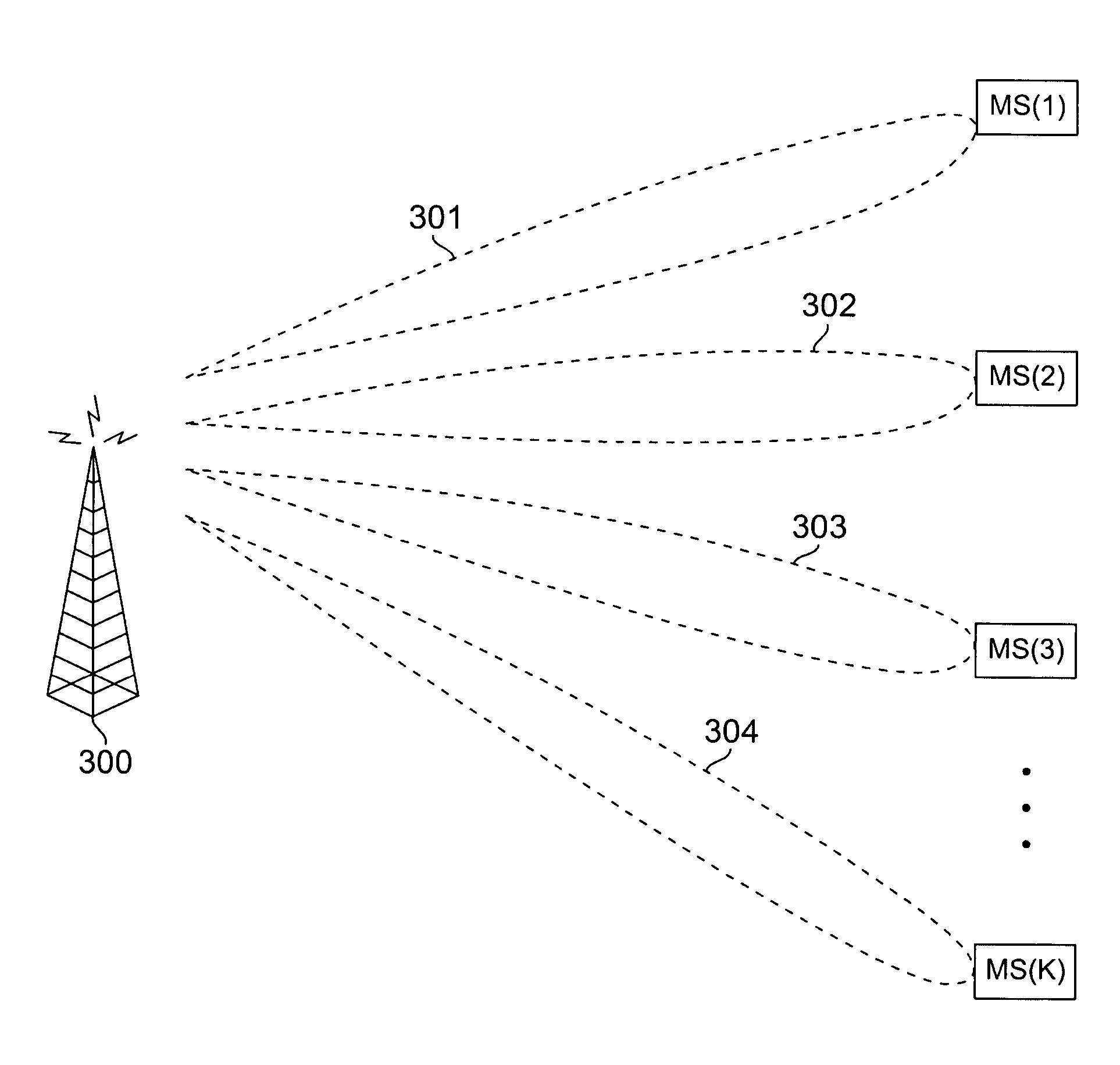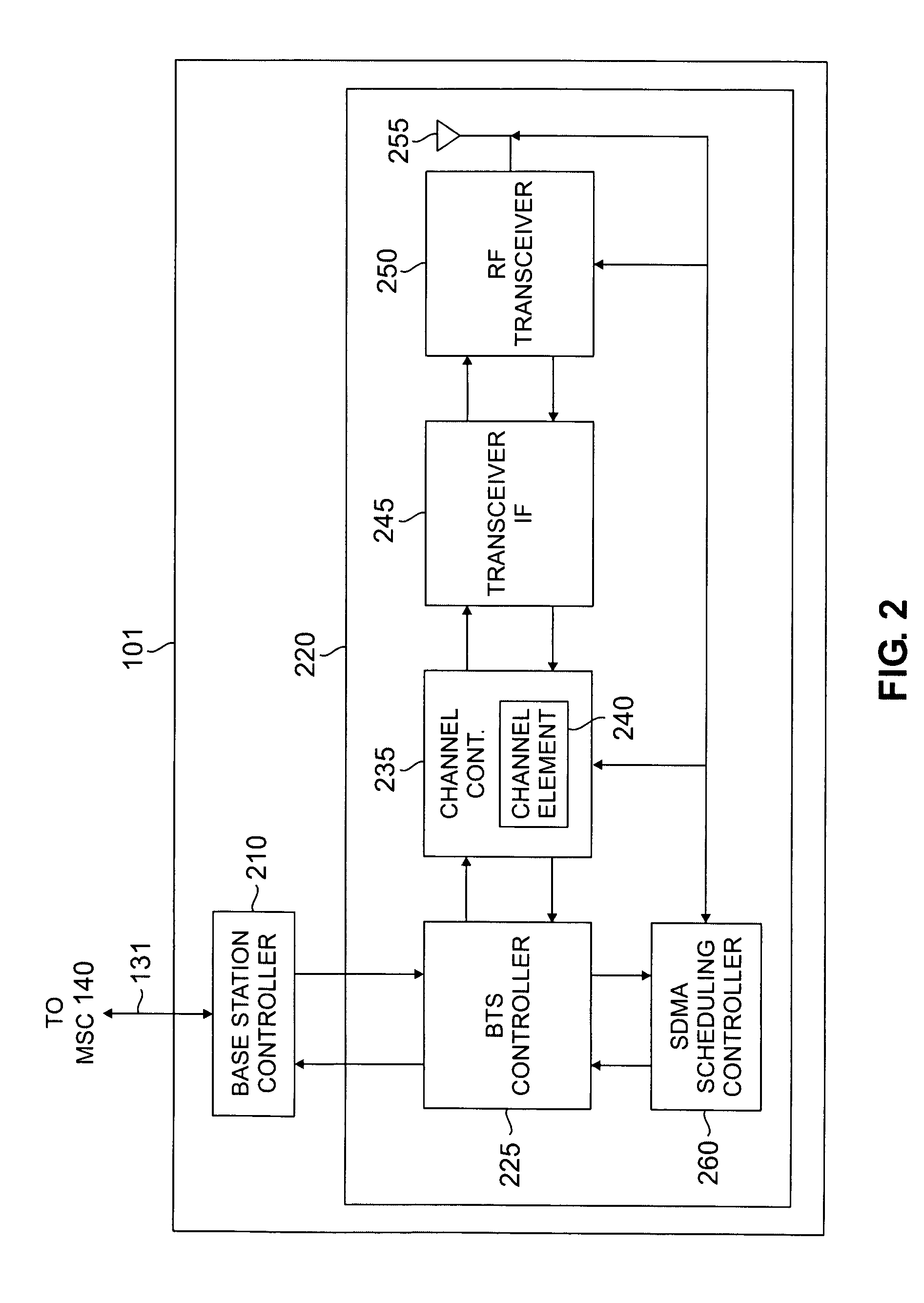Apparatus and method for downlink spatial division multiple access scheduling in a wireless network
a wireless network and spatial division multiple access technology, applied in the field of wireless networks, can solve the problems of weak users, not improving throughput significantly, and the optimal slot allocation of the downlink tdma/sdma system based on sinr feedback from the mobile station (ms)
- Summary
- Abstract
- Description
- Claims
- Application Information
AI Technical Summary
Benefits of technology
Problems solved by technology
Method used
Image
Examples
Embodiment Construction
[0032]FIGS. 1 through 4, discussed below, and the various embodiments used to describe the principles of the present invention in this patent document are by way of illustration only and should not be construed in any way to limit the scope of the invention. Those skilled in the art will understand that the principles of the present invention may be implemented in any suitably arranged SDMA-OFDMA wireless network.
[0033]FIG. 1 illustrates exemplary wireless network 100, which implements a downlink scheduler according to the principles of the present invention. Wireless network 100 comprises a plurality of cell sites 121-123, each containing one of the base stations, BS 101, BS 102, or BS 103. Base stations 101-103 communicate with a plurality of mobile stations (MS) 111-114 over orthogonal frequency division multiple access (OFDMA) channels according to, for example, the IEEE-802.16d / e standard or the proposed WiBro standard. In an advantageous embodiment of the present invention, mo...
PUM
 Login to View More
Login to View More Abstract
Description
Claims
Application Information
 Login to View More
Login to View More - R&D
- Intellectual Property
- Life Sciences
- Materials
- Tech Scout
- Unparalleled Data Quality
- Higher Quality Content
- 60% Fewer Hallucinations
Browse by: Latest US Patents, China's latest patents, Technical Efficacy Thesaurus, Application Domain, Technology Topic, Popular Technical Reports.
© 2025 PatSnap. All rights reserved.Legal|Privacy policy|Modern Slavery Act Transparency Statement|Sitemap|About US| Contact US: help@patsnap.com



